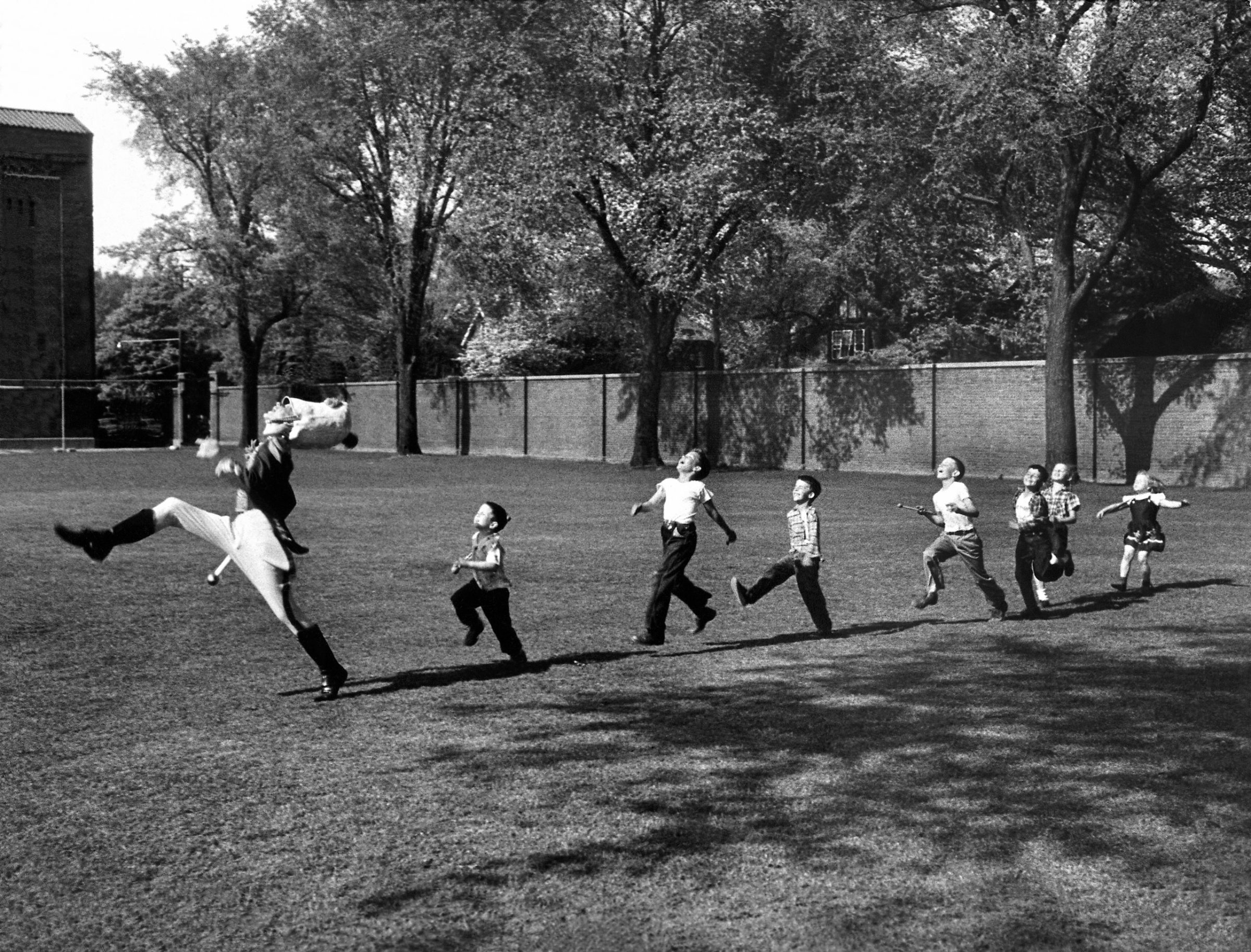
The sad destiny of countless great photographs is that, as the decades pass, the pictures are increasingly in danger of losing their ability to stun, shock, inspire, delight. In short, to move us. We’ve seen them reproduced so many times—in books, on postcards, in gallery and museum shows—that the images can sometimes assume that most staid and harmless of traits: they become familiar.
And when has the familiar stunned, shocked, inspired or delighted anyone?
It’s worthwhile, then, to occasionally make the effort to step back and try to experience famous photographs as if encountering them for the first time. The question then becomes: Are we capable of seeing—really seeing, with wholly fresh eyes—the most celebrated, readily identifiable pictures ever made?
Take the photograph featured here. Most of us have come upon it many, many times throughout our lives. But when was the last time any of us really saw it? Like so many of Alfred Eisenstaedt’s most storied photographs, this one flirts with sentimentality—but avoids that ignoble fate by virtue of its energy, and its immediacy. This is not a depiction of manufactured emotion, but a masterfully framed instant of authentic, explosive spirit.
As the editor, writer, poet and former director of photography for LIFE, David Friend, once noted, this picture is Eisenstaedt’s “ode to joy.”
“It was early in the morning,” Eisenstaedt himself recalled of the fall day in 1950 when he took the photo. On assignment for LIFE, covering the University of Michigan’s nationally famous marching band, he spotted the school’s drum major practicing his craft. Then, Eisenstaedt said, “I saw a little boy running after him, and all the faculty children on the playing field ran after the boy. And I ran after them. This is a completely spontaneous, unstaged picture.”
It is also, all these years later, one of the great photographer’s most beloved pictures. (When Bill Clinton was offered any Eisenstaedt print as thanks for a sitting he and his wife and daughter granted the then-94-year-old photographer on Martha’s Vineyard in 1993, the president reportedly chose this one.)
So. Is this the happiest photograph ever made? That’s hardly a fair question, of course—and, admittedly, more than a little bit vague. After all, by “happiest,” do we mean the one picture that most perfectly depicts happiness? Do we mean the one picture that elicits or evokes happiness in the viewer? And what do we really mean by “happiness,” anyway?
All perfectly reasonable questions. And all largely unanswerable. The point here is that Eisenstaedt’s image of the high-stepping, high-spirited drum major—a fellow named Dick Smith—and his ebullient devotees could, conceivably, be a consensus pick among photography experts as the happiest photo ever made. It’s unlikely, but it is conceivable.
Which brings us back to where we started; namely, trying to see an iconic picture afresh, as if encountering it for the very first time. One need not be a photography expert to sense, in Eisenstaedt’s picture, the essence of what most people would recognize as happiness.
One only has to see, and to feel. The photo will do the rest.
Ben Cosgrove is the Editor of LIFE.com

More Must-Reads from TIME
- Donald Trump Is TIME's 2024 Person of the Year
- Why We Chose Trump as Person of the Year
- Is Intermittent Fasting Good or Bad for You?
- The 100 Must-Read Books of 2024
- The 20 Best Christmas TV Episodes
- Column: If Optimism Feels Ridiculous Now, Try Hope
- The Future of Climate Action Is Trade Policy
- Merle Bombardieri Is Helping People Make the Baby Decision
Contact us at letters@time.com